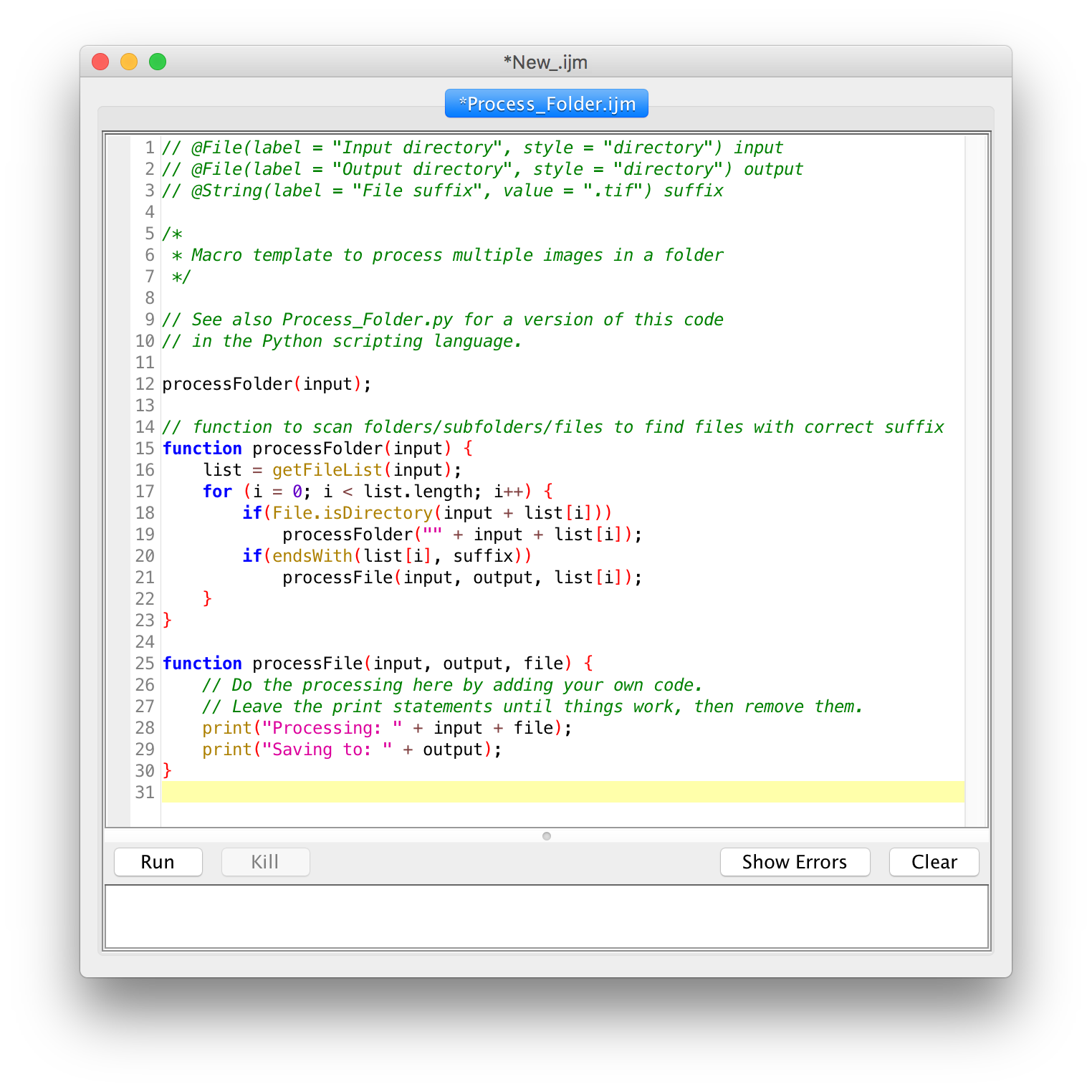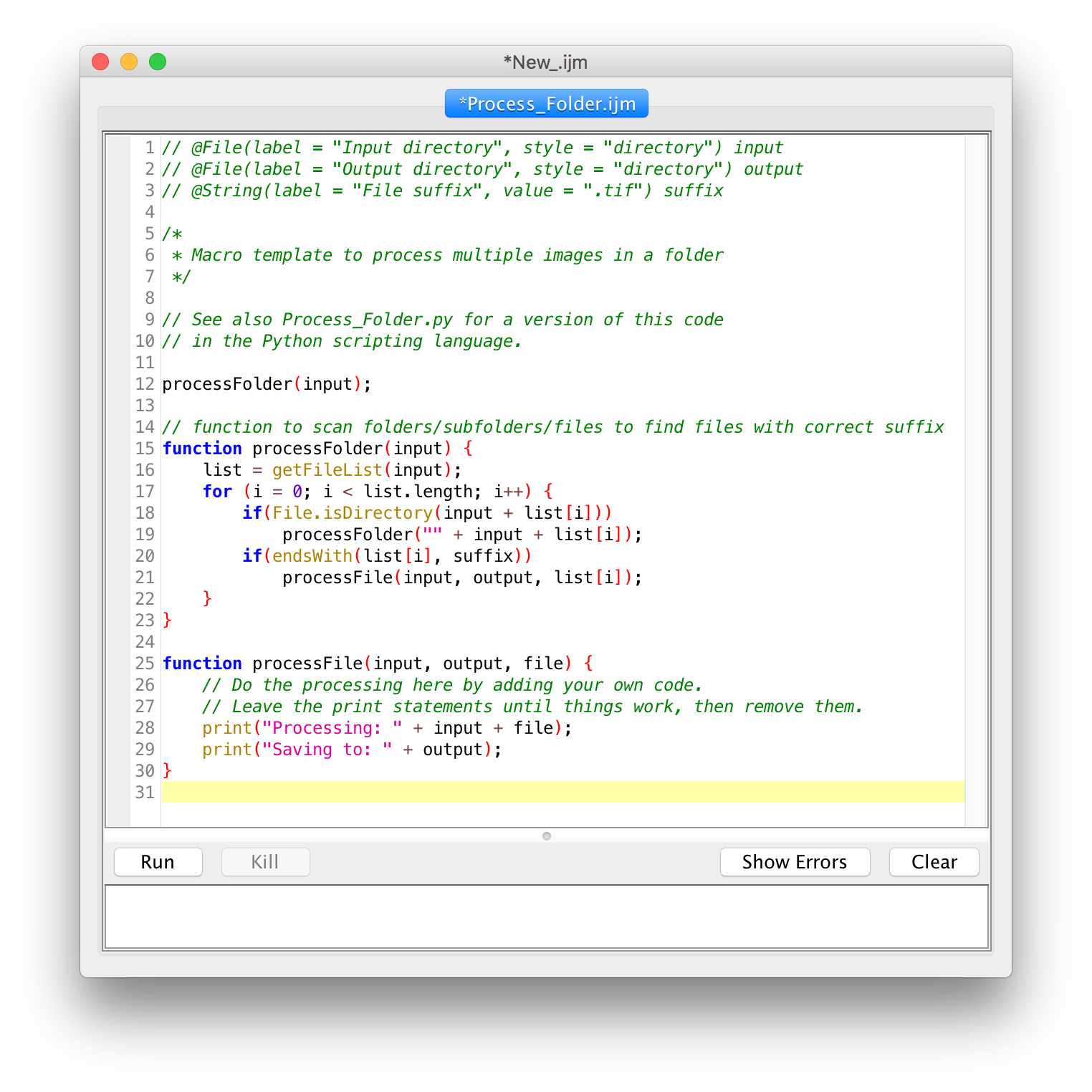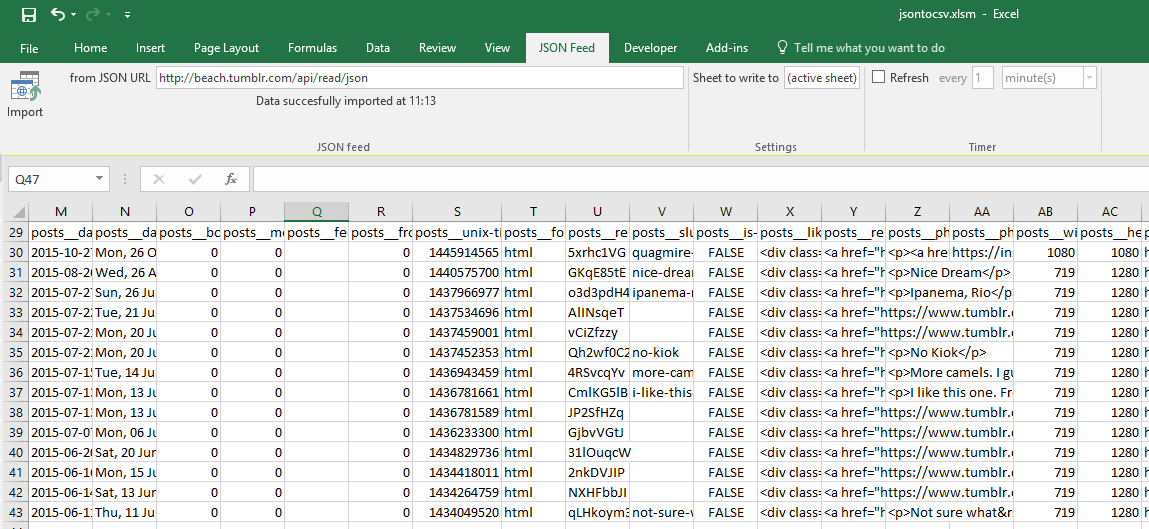The Ultimate Guide to Fiji Macro Functions

Fiji, a powerful open-source image processing platform, offers a wide range of features and capabilities, including its versatile macro functions. These macros, written in Jython (a Python dialect), enable users to automate tasks, perform complex image analyses, and streamline their workflows. This comprehensive guide aims to delve into the world of Fiji macro functions, providing an in-depth understanding of their potential and practical applications.
Exploring the Potential of Fiji Macro Functions

Fiji’s macro functions are an essential tool for researchers, scientists, and image analysts, offering an efficient way to manipulate and analyze images. With its user-friendly scripting language, Jython, users can create custom macros to suit their specific needs, making it an invaluable resource for various scientific disciplines.
The Power of Automation
One of the primary advantages of Fiji macro functions is their ability to automate repetitive tasks. This automation not only saves time but also reduces the potential for human error, ensuring consistent and reliable results. For instance, a macro can be designed to process a batch of images, applying the same set of operations to each, making it ideal for large-scale image analysis.
Consider a case study where a biologist needs to analyze a series of microscope images to identify and count specific cellular structures. Instead of manually examining each image, a Fiji macro can be programmed to identify and count these structures automatically. This not only accelerates the process but also provides a more accurate and standardized result.
Customizable Image Analysis
Fiji’s macros allow users to customize their image analysis pipelines, offering a high degree of flexibility. Whether it’s adjusting contrast, applying filters, or measuring specific parameters, macros can be tailored to suit the unique requirements of each project. This level of customization is particularly beneficial in fields like medical imaging and material science, where precise image analysis is crucial.
For example, in the field of material science, researchers often need to analyze microscopic images of materials to determine their structural properties. A Fiji macro can be developed to automatically segment and characterize these structures, providing valuable insights into the material's behavior and performance.
| Macro Functionality | Real-World Application |
|---|---|
| Image Thresholding | Segmentation of biological tissues in medical images. |
| Morphological Operations | Enhancing and analyzing textures in geological surveys. |
| Particle Analysis | Counting and characterizing nanoparticles in material science. |

Practical Guide to Writing Fiji Macros

Writing effective Fiji macros requires a combination of image processing knowledge and Jython programming skills. Here’s a step-by-step guide to help you get started:
Understanding the Basics
Before diving into macro creation, it’s essential to have a solid understanding of the Fiji interface and its built-in image processing tools. This includes familiarity with image manipulation techniques, such as scaling, rotating, and adjusting brightness and contrast.
Additionally, a basic understanding of Jython syntax is beneficial. While Jython is similar to Python, there are some differences in syntax and available libraries. The Fiji community provides extensive documentation and resources to help users get started with Jython programming.
Planning Your Macro
The first step in writing a macro is to plan its functionality. Identify the specific tasks you want your macro to perform and the input it will require. For example, if you’re creating a macro to analyze a series of microscope images, you’ll need to consider the type of analysis you want to perform and the image format you’re working with.
Writing the Script
Once you have a clear idea of your macro’s functionality, you can start writing the Jython script. Fiji provides a macro recorder that can be used to generate basic scripts, which can then be edited and customized to suit your needs.
Here's a simple example of a Jython script that opens an image, applies a Gaussian blur, and saves the result:
ij.IJ.open("image.tif");
ij.IJ.run("Gaussian Blur...", "sigma=1.0");
ij.IJ.saveAs("tif", "blurred_image.tif");
Testing and Debugging
After writing your script, it’s crucial to test it thoroughly. Check that the macro performs the desired operations accurately and efficiently. If errors occur, utilize Fiji’s built-in debugging tools to identify and fix issues.
Sharing and Collaborating
Fiji’s open-source nature encourages collaboration and knowledge sharing. Once you’ve created a useful macro, consider sharing it with the community. This not only benefits others but also allows for feedback and potential improvements.
Advanced Macro Techniques
While basic macros can automate simple tasks, advanced techniques can unlock even more powerful capabilities. Here are some advanced features to explore:
Looping and Iteration
By utilizing loops, macros can perform operations on multiple images or objects within an image. For instance, a macro can be designed to process a folder of images, applying the same operations to each.
ImageJ Functions and Plugins
Fiji’s macros can access ImageJ’s extensive library of functions and plugins. This allows for advanced image processing and analysis, leveraging the power of ImageJ’s built-in tools.
User Interface Customization
Macros can be designed with custom user interfaces, making them more user-friendly and accessible. This involves using Fiji’s UI components, such as buttons, sliders, and checkboxes, to create interactive macros.
Future Implications and Innovations
The potential for Fiji macro functions is vast, with ongoing developments in both image processing and scripting technologies. Here are some potential future directions and innovations:
Machine Learning Integration
Integrating machine learning algorithms into Fiji macros could revolutionize image analysis. This would allow for more advanced image classification, segmentation, and feature extraction tasks, opening up new possibilities in medical diagnosis, material science, and more.
Cloud Computing and Big Data
As image datasets continue to grow in size and complexity, cloud computing could play a significant role in Fiji’s future. Macros could be designed to leverage cloud resources, enabling the analysis of massive image datasets in a distributed and scalable manner.
Community Development and Collaboration
The open-source nature of Fiji fosters a vibrant community of developers and users. Continued collaboration and knowledge sharing can lead to the development of new tools, macros, and plugins, enhancing Fiji’s capabilities and keeping it at the forefront of image processing.
How can I learn Jython programming for Fiji macros?
+Fiji provides an extensive documentation and tutorial section on its website, which covers the basics of Jython programming for macros. Additionally, online resources, such as tutorial videos and forums, can be valuable learning tools. Starting with simple macros and gradually increasing complexity is a recommended approach.
Can I use Python scripts with Fiji?
+Yes, Fiji supports the use of Python scripts through its built-in Python interpreter. This allows users to leverage the vast ecosystem of Python image processing libraries and tools within the Fiji environment.
Are there any security considerations when using macros?
+While Fiji macros are generally safe, as with any scripting language, there is a potential risk of executing malicious code. It’s important to obtain macros from trusted sources and thoroughly review the code before running it. Additionally, Fiji provides security features, such as macro signing, to ensure the integrity of macros.



